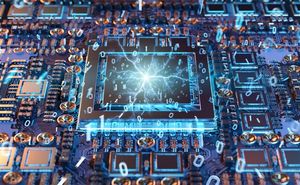HOLLY, Mich., Aug. 07, 2025 (GLOBE NEWSWIRE) -- What should you do if your check engine light – also called a malfunction indicator lamp (MIL) – comes on? Start by taking a closer look at it. In general, a solid yellow or orange light means something is wrong and should be addressed soon, but it’s not an emergency. A flashing light or a light that was yellow or orange and is now red indicates a major problem that should be addressed immediately — stop driving. Continuing to drive once the check engine light is on raises the risk of increased vehicle emissions, reduced fuel economy, power loss, severe engine damage and vehicle breakdown.
“It’s called a check engine light because you need to check for problems as quickly as possible,” explains Clay Parks, vice president of development for Rislone. “Fortunately, solving the problem doesn’t always have to be complicated or expensive.”
When the check engine light comes on, a code is also set in the vehicle computer. This code can be read by an on-board diagnostic (OBD) scan tool. Many auto parts stores offer free OBD code checks and sell inexpensive code-readers for do-it-yourselfers, or you can take the vehicle to a repair shop for diagnosis.
Here are the top 3 issues that can trigger the check engine light and what to do about them:
- Loose fuel cap. If the check engine light comes on, check your fuel cap first. The fuel cap helps recirculate gasoline vapors and trap them from venting outside. A loose or faulty fuel cap can cause unintended emissions, triggering the light. More often than not, the fix is simply to make sure the cap is screwed on until a “click” is heard. A loose cap can also cause gas in the tank to evaporate — bruising fuel efficiency.
- Ignition system issues. Worn-out spark plugs and wires can cause a misfire, turning on the check engine light. This can trigger codes like P0300 for a random or multiple cylinder misfire, or P0301, P0302 etc. to indicate which cylinder misfired. A faulty ignition coil (P0351) will also ignite the warning light. Replacing the bad components should solve the problem.
- Emissions system issues. The vehicle emissions system is designed to reduce harmful pollutants. When something goes wrong with any of the system components, including the catalytic converter, oxygen sensors, and exhaust gas recirculation (EGR) valve, the check engine light turns on. Common codes for these issues include P0420, P0421, P0430 and P0431. Many problems in this system can be traced back to contamination, especially in vehicles regularly driven short distances, filled with poor-quality fuel and not properly maintained. Rislone Cat Complete® Fuel, Exhaust & Emissions System Cleaner (part #4720) offers an easy-to-use chemical solution. When installed directly to the fuel tank, Cat Complete cleans the entire fuel, exhaust and emissions systems, restoring their performance and clearing the check engine light.
This is just a starting point. Other issues that can trigger the check engine light include problems with the transmission, cooling or fuel systems. In some vehicles, the check engine light may come on if the oil is low. Consult your vehicle’s owner’s manual to find out what the lights mean for your specific vehicle. The most important thing is not to ignore the light. Take the hint and find out what your vehicle is trying to tell you so you can address the problem before it grows into something major.
About Rislone
Based in Holly, Michigan, Rislone has been America’s best-selling engine treatment brand for more than 100 years. All Rislone products are made in the USA and are available where auto parts are sold. Rislone is ISO 9001 certified. Learn more at Rislone.com.
A photo accompanying this announcement is available at https://www.globenewswire.com/NewsRoom/AttachmentNg/61b72ac1-a228-49d6-b926-cc930f4988fd

Media Contact: Kristen Simpson Simpson Communications, LLC (216) 991-4297 kristen@simpsoncomm.com







